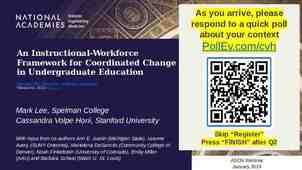Child Safeguardin g Standards
35 Slides3.99 MB
Child Safeguardin g Standards
Child safeguarding the responsibility that organisations have to make sure their staff, operations, and programmes do no harm to children.
An organisation needs to know where, when and how your organisation affects children what policies and procedures are needed who is the appropriate designated child safeguarding person/s what safeguarding induction and training is needed it’s code of conduct Abuse may still take place from within your organisation. At that point, it is how your organisation responds that is crucial for the child and for the organisation.
Why have Standards? To promote good practice To protect children To provide targets for agencies
General principles All children have equal rights to protection from harm. Everybody has a responsibility to support the protection of children. Organisations have a duty of care to children with whom they work If organisations work with partners they have a responsibility to help partners meet the minimum requirements on protection. All actions on child safeguarding are taken in the best interests of the child, which are paramount.
Advantages of implementing child safeguarding standards Children are protected Organisation staff and associates are protected The organisation and its reputation is protected
Overview of standards Standard 1 Policy Standard 2 People Standard 3 Procedures Standard 4 Accountability
Standard 1 Policy The organisation develops a policy that describes how it is committed to preventing, and responding appropriately to harm to children
Standard 1 Policy All organisations whose work impacts on children need to develop a clear policy that prevents harm to children and outlines what measures are in place to respond when safeguarding concerns arise
Standard 1 Policy Why should organisations meet this standard? Developing a child safeguarding policy makes it clear to everyone that children must be safeguarded and not put at risk of harm because of the organisation’s contact with, or impact on, children.
Standard 1 Policy The policy reflects the rights of children to protection from abuse and exploitation as outlined in the United Nations Convention of the Rights of the Child (UNCRC) The policy is approved by the organisation’s management body and applies to all the organisation’s staff and associates
Standard 1 Policy The policy is publicised in an appropriate manner, promoted and distributed widely Managers have specific responsibility for setting and overseeing the implementation of the policy
Ways of providing evidence The following documents can be used to provide evidence that the standard has been met: A copy of the policy, signed by the management board Policy translated into local languages Examples of ways the policy has been promoted, including to partners, children and communities
Do’s and don’ts Do use other organisations’ child safeguarding policies to inform yours, Don’t just replicate it! Do work with a group of relevant staff to develop and disseminate the policy Do make a child friendly version for children you work with Don’t develop a policy document that just sits in the office
Standard 2 People The organisation places clear responsibilities and expectations on its staff and associates and supports them to understand and act in line with these
Standard 2 People The organisation places clear responsibilities and expectations on its staff and associates and supports them to understand and act in line with these
Standard 2 People Why should organisations meet this Standard? Everyone has a role to play in their safeguarding Organisations need to ensure that all those associated with the organisation understand safeguarding
Standard 2 People Key staff are designated at different levels (including director level) as ‘focal points’ with clearly defined roles and responsibilities Recruitment processes have strong child safeguarding measures in place There are written guidelines for appropriate and inappropriate behaviour of adults towards children and of children towards other children There are guidelines for engaging partners, communities and children on child safeguarding
Ways of providing evidence The following documents can be used to provide evidence that the standard has been met: A copy of training plans, course attendance records and course evaluations Copies of information for children about sources of support Lists of contacts for specialist advice and information Partnership agreements, funding application and reporting forms Samples of recruitment adverts and employment contracts Codes of conduct Guidelines for adult-to-child behaviour and child-to-child behaviour
Do’s and don’ts Do make sure that all people are aware of potential risks, your child safeguarding policies and their obligations to meet the requirements of those policies Do discuss openly with partners and children and families what you are trying to achieve with your child safeguarding measures and find out what challenges may arise and how you can work together to overcome these Don’t assume that everyone who works with children is safe or will do them no harm.
Standard 3 Procedures The organisation creates a child safe environment through implementing child safeguarding procedures that are applied across the organisation
Standard 3 Procedures Safeguarding policy commitments are integrated into existing organisational processes and systems and, where necessary, new procedures introduced. A procedure details the steps that need to be carried out to fulfil the policy.
Standard 3 Procedures Why should organisations meet this standard? Child safeguarding measures need to be integrated throughout an organisation. Organisations carry out local mapping exercises which provide information on the legal, social welfare and child protection arrangements
Standard 3 Procedures Child safeguarding risk assessments and mitigation strategies are incorporated into existing risk assessment processes at all levels Child safeguarding measures are integrated with existing processes and systems (strategic planning, budgeting, recruitment, programme cycle management, performance management, procurement, partner
Standard 3 Procedures A reporting and responding process for incidents and concerns is developed which is locally appropriate
Ways of providing evidence The following documents can be used to provide evidence that the standard has been met: Risk registers which have recorded risk assessments and mitigating strategies Information from local mappings Reporting flowcharts for offices and partners
Do’s and don’ts Do be clear on your ‘area of control’ and your responsibilities; mitigate the risks that you have control over Don’t think that you will prevent all possible abuses; the way you respond to abuse is as important as preventing it Do adopt a strategy of continuous improvement; don’t think you will have everything in place overnight Do work with other organisations who can support your safeguarding measures – don’t try and do it on your own! Do ensure the safety and support of the child throughout the process
Standard 4 Accountability The organisation monitors and reviews its safeguarding measures
Standard 4 Accountability The organisation has in place measures and mechanisms for monitoring and review of safeguarding measures and to ensure both upward and downward accountability in relation to child safeguarding.
Standard 4 Accountability Measure child safeguarding performance Active monitoring, before things go wrong, Reactive monitoring, after near misses or when things go wrong
Standard 4 Accountability Implementation of child safeguarding policies and procedures is regularly monitored Progress, performance and lessons learnt are reported to key stakeholders (management forums and external or independent bodies where relevant) and included in organisations’ annual reports
Standard 4 Accountability Learning from practical case experience informs policy review and changes to child safeguarding measures Policies and practices are reviewed at regular intervals and formally evaluated by an external evaluator/auditor every 3 years
Ways of providing evidence The following documents can be used to provide evidence that the standard has been met: Risk registers Self-audit tool Internal audit reports Keeping Children Safe Certification
Do’s and don’ts Do be transparent with your information on child safeguarding; an organisation’s credibility rests on being transparent and responding appropriately to concerns. Don’t rely on having a policy as a measure of accountability. Being accountable is ensuring that policy is being implemented through a range of child safeguarding measures. Do put as much effort into monitoring and review as with implementation. It is only through monitoring that you will discover whether your effort with implementing measures has been successful.
Thank you








































